


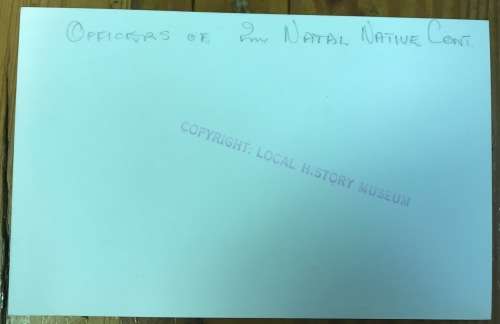
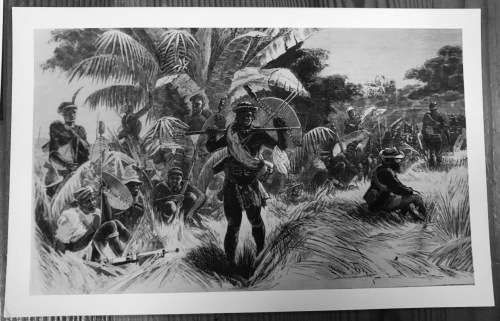
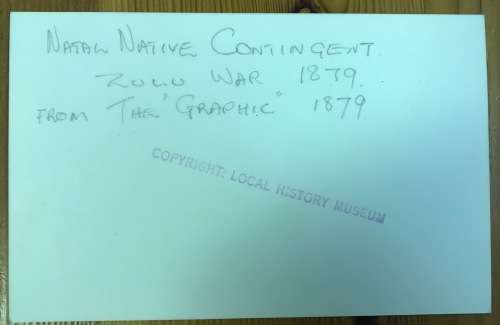
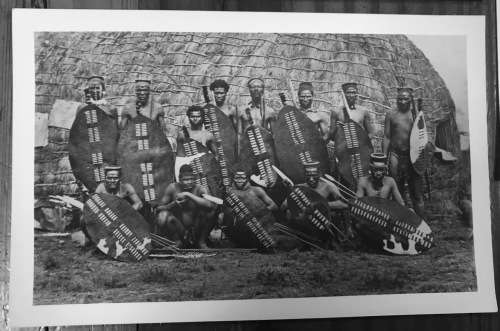






ZULU WAR PHOTOGRAPH=NATAL NATIVE CONTINGENT=1879=COPYRIGHT LOCAL HISTORY MUSEUM=RIFLES=SOLDIERS
Check my rate
| Main centres: | 1-3 business days |
| Regional areas: | 3-4 business days |
| Remote areas: | 3-5 business days |













| Main centres: | 1-3 business days |
| Regional areas: | 3-4 business days |
| Remote areas: | 3-5 business days |
BLACK & WHITE PHOTOGRAPHS x 2 = BOER WAR = NATAL WAR
ZULU WAR = NATAL NATIVE CONTINGENT = 2nd PHOTO.
Copyright local History Museum
1. Officers of the Natal Native Contingent.
2. Natal Native Contingent from the "Graphic" 1879.
3. Border Guards of the NNC.
The Anglo-Zulu war was fought in 1879 between the British Empire and the Zulu Kingdom. Following Lord Carnarvon's successful introduction of Federation in Canada, it was thought that similar political effort, coupled with military campaigns, might succeed with the African kingdoms, tribal areas and Boer Republics in South Africa. In 1874, Sir Henry Bartle Frere was sent to South Africa as High Commissioner for the British Empire to bring such plans into being. Among the obstacles were the presence of the independent states of the South African Republic and the Kingdom of Zululand and its army.
Frere, on his own initiative, without the approval of the British government and with the intent of instigating a war with the Zulu, had presented an ultimatum on 11 December 1878, to the Zulu king Cetshawyo with which the Zulu king could not comply, including disbanding his army and abandoning key cultural traditions. Bartle Frere then sent Lord Chelmsford to invade Zululand after this ultimatum was not met. The war is notable for several particularly bloody battles, including an opening victory of the Zulu at the Battle of Isandlwana, followed by the defeat of a large Zulu army at Rorke's Drift by a small force of British troops. The war eventually resulted in a British victory and the end of the Zulu nation's dominance of the region.
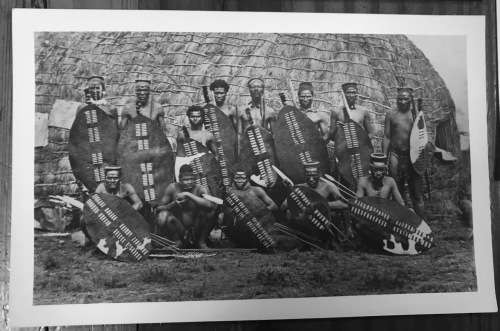
Photograph of members of the Natal Native Contingent (NCC) armed with assegais (short spears) and shields, 1879 (c). The NNC was formed in 1878 to bolster the defences of the British colony of Natal. Most recruits came from the Basuto and Mponso tribes. NNC troops wore their traditional tribal apparel with a red cloth bandanna around their foreheads, the only item to distinguish them from Zulu warriors who were traditional enemies of the Basuto and Mponso. Natal?s white population had long feared that arming the black population would constitute a security risk, and as a result only a small percentage of NNC soldiers were issued with guns. These were obsolete muzzle-loading muskets rather than modern rifles. Soldiers issued with firearms were only given four rounds of ammunition at any one time. Most NNC soldiers fought with traditional African weapons during the Anglo-Zulu War (1879). From album of 70 photographs, associated with Zulu War (1879). Associated with Col Hume, 94th Regiment of Foot. Date: 1879